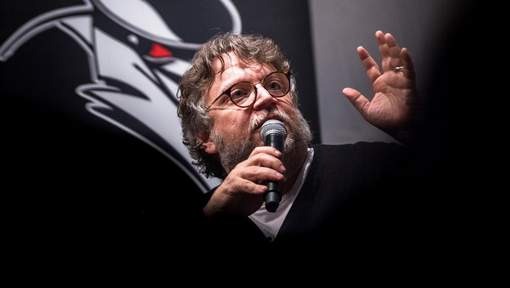When director Guillermo del Toro set out 15 years ago to make a dark version of the famous fairy tale 'Pinocchio,' he decided to place the puppet and its creator in the fascist world of the 1930s.
The characters of elderly woodcarver Geppetto and his exuberant, sharp-nosed puppet, Pinocchio, based on an 1883 Italian novel and popularised by Disney, are thrust into Benito Mussolini’s Italy of military salutes, strict conformity and violent machismo in del Toro's animated film, which will be released on Netflix on 9 December.
“I wanted (to set the film in) a moment in which behaving like a puppet was a good thing,” del Toro told French news agency AFP last weekend on the red carpet of the American Film Institute festival in Los Angeles. “I wanted Pinocchio to be disobedient,” the Mexican filmmaker said. "I wanted Pinocchio, who was the only puppet, to not act like a puppet. I thought, thematically, that it was perfect.”
While the theme of fascism seems particularly apt in light of current world politics, it was just as relevant when he conceived the project several years ago, del Toro stressed. “It is something that concerns me because it is something that humanity seems to come back to,” said the filmmaker, who has already dealt with the theme in previous Gothic works, “The Devil’s Backbone” (2001) and “Pan’s Labyrinth” (2006), which are set in Franco’s Spain.
Fascism is “always alive in the background ... or in the foreground,” del Toro noted.
'I've been fighting to make it for half my career'
The director tried to sell his interpretation of 'Pinocchio' to Hollywood studios and producers for years before Netflix finally bought the rights in 2018. “I’ve been fighting to make it for half my career,” he said.
The stop-motion animated feature took more than 1,000 days to make. Stop-motion animation, known for its difficulty, is one of the oldest techniques in cinema. It consists of taking successive photos of inanimate objects and giving them the illusion of movement.
For Guillermo del Toro, the use of computer-generated imaging – as in the latest live-action remakes of Disney classics – was never an option. “It was very pertinent for me to make a story about a puppet with puppets, and the puppets believe they are not puppets,” del Toro explained. “It’s a very beautiful, kaleidoscopic telescoping thing."
While the filmmaker, who won an Oscar for his 2017 fantasy film 'The Shape of Water,' has always been fascinated by animation, 'Pinocchio' is his first such production.
'Animation is film, animation is art'
“In North America, animation is seen a little more as a genre for kids,” del Toro noted. “One of the things I think everybody is trying to change, not just us, is to say, ‘animation is film, animation is acting, animation is art'."
Stop-motion touches on “profoundly moving and profoundly spiritual things," but it is a technique that is "constantly on the verge of extinction,” del Toro noted. “It's only kept alive by crazy fanatics ... we keep it alive.”
While 'Pinocchio' focuses on the relationship between father and son, Guillermo del Toro became fascinated with the mischievous wooden puppet as a child thanks to his mother, to whom he was extremely close.
“I'd collect Pinocchio artefacts … my mother and I saw it together when I was very young and she kept giving me Pinocchios all through my life,” he recalled.
His mother died last month, one day before the film's international premiere in London.

